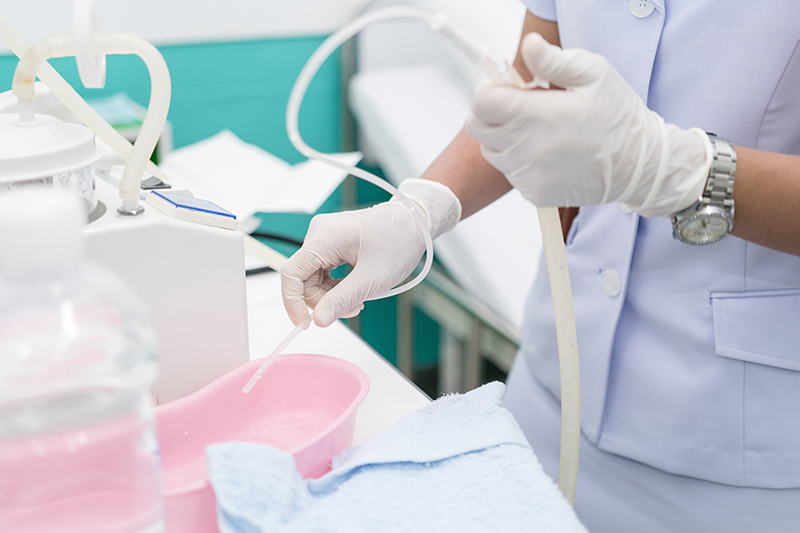Catheter SelectionImproper Catheter Selection Injuries
The catheter injury lawyers at Patterson Law evaluate whether bladder or urethra injuries were caused by improper catheter insertion or selection. Before a catheter is selected or inserted a medical history of the patient should be taken. A detailed medical history is needed to identify any potential contraindications to the use of a catheter. A detailed medical history may not be an option for emergency surgeries. Catheters are used before operations to prevent urinary incontinence during lengthy surgical procedures.
A physical exam should also be performed to detect any other injuries or potential causes of the need for a foley catheter. The underlying problem for urine retention or incontinence may identify medical information relevant to the selection of a catheter. In addition, some medical problems may increase the risk of what is referred to as a catheter associated urinary tract infection. A neurologic exam should be performed to determine if urinary retention may be due to a neurological condition. Lab work should also be ordered to determine if there is impaired renal function, abnormal blood counts, metabolic panel results, cultures or acidosis.
Catheters may be ordered for the following medical conditions:
- Comfort for end-of-life care.
- Acute urinary retention.
- To monitor urine output.
- To collect urine for diagnostic purposes.
- Radiographic evaluations of the urinary tract.
- Neurogenic bladder.
- Mechanical problem resulting in the inability to urinate.
- Certain surgical procedures.
- Prevent infections while an incontinent patient has healing open sacral or perineal wounds.
- Prolonged immobilization due to certain medical conditions such as healing pelvic fracture.
Foley catheters drain urine through the urinary tract. Supra-pubic Foley catheters drain urine from the bladder through the skin. The later is used for patients that have an obstruction preventing normal urinary flow. It may also be selected when urethral catherization has failed.
Call 301-383-1522 to schedule a free catheter injury consultation with a Top 100 Maryland Super Lawyer and a Board Certified Civil Trial Attorney.
Injuries may result if a Foley catheter was selected as opposed to supra-pubic Foley catheter. Reasons for selecting supra-pubic Foley catheters include:
- Penile deformity.
- Perineal hematoma
- Abdominal or pelvic trauma with blood where urine exits the body.
- High-riding prostate
On the other hand, supra-pubic Foley catheters may not be indicated for patients exhibiting:
- An ability to empty their bladder.
- Prior lower abdominal surgery with scarring.
- Systemic bleeding disorder
The use of Foley catheters pose risks to patients. Informed consent is the procedure by which medical personnel informs a patient about the risks and benefits of using a catheter and obtaining permission from the patient. A healthcare provider is required to disclose all relevant information for the patient to make an informed decision before agreeing to catheterization. This may include information about risks, benefits and alternative treatments.
Catheters are made of multiple different materials such as rubber, latex, plastic, silicone, coated latex and hydrophilic-coated latex. Catheters also come in different sizes. The selection of proper catheter material and size are important. The smallest sized catheter and balloon should be selected, and attention should be paid to any allergies, such as latex allergies the patient may have. Once the proper catheter is selected the healthcare provider must use a strict sterile technique for catheritization.
A catheter should be checked for any loops or kinks prior to insertion. A kink in the inflation channel of the balloon can result in urine not draining and the inability to deflate the balloon. The balloons are inflated with sterile water, saline solution or air. The amount of sterile water needed should be assessed prior to the insertion of the catheter. The patient should lie in their back with their legs spread while the catheter is inserted. The genital area should be cleaned with an antiseptic solution prior to the insertion of the catheter to avoid an infection. Chemical or allergic irritants should not be applied near the genital area. The use of such irritants increases the chances of infection. The catheter should also be lubricated with a water based lubricating gel prior to insertion.
Once the catheter has been inserted the correct positioning should be confirmed by urine output. Confirming correct placement of the catheter is a basic step to prevent injury. The bag collecting the urine should be placed at a level lower than the patient’s bladder. The drainage bag should then be emptied on a regular basis.
Some patients will need to be referred to a urologist. Supra-pubic Foley catheters are often inserted by a urologist or under ultrasound guidance. Insertion with ultrasound guidance is a safer option for catheter placement. Ultrasound is helpful with defining the anatomy of the bladder and avoiding injury. This is particularly true for patients that have had prior abdominal surgeries or pelvic irritation that may have resulted in development of adhesions or scarring. Ultrasound guidance is the stand of care when adhesions are possible due to prior abdominal surgeries. Supra-pubic catheterization is generally performed under local anesthesia.


